Fotografiska incl. Cindy Sherman, Henriette Sabroe Ebbesen, Rinko Kawauchi, Kary H. Lasch, Senay Berhe, The Selfie Matter
A first foray into the Fotografiska family of galleries introduces me to several new photographers and one old favourite in a new medium.
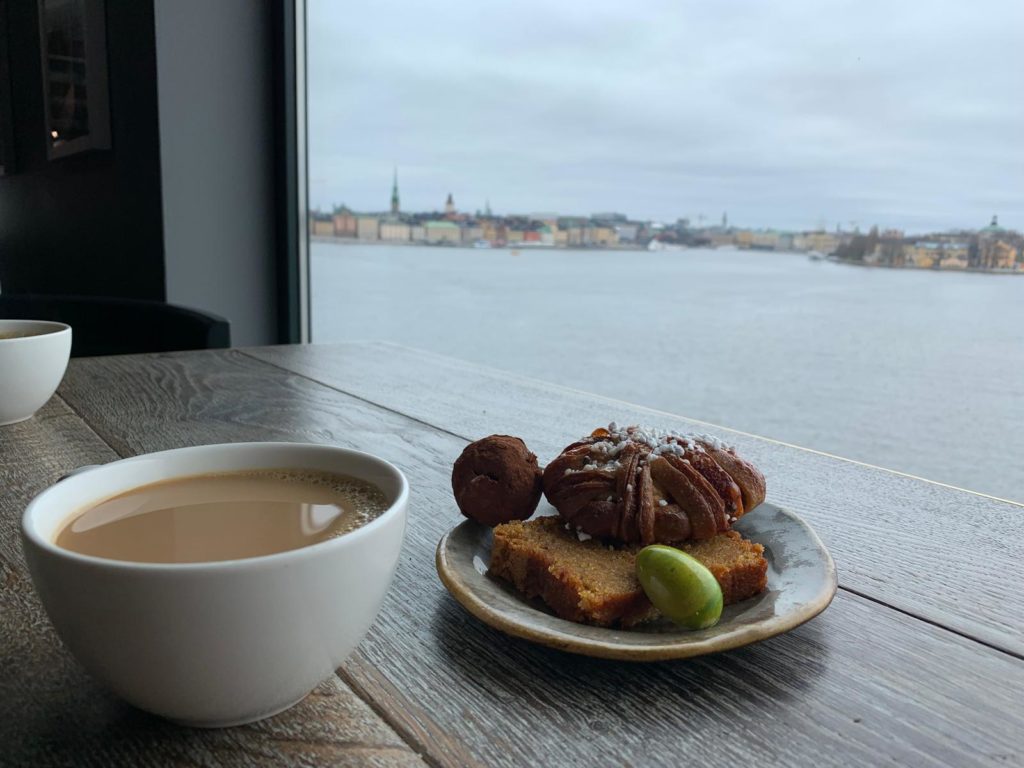
Fotografiska, Stockholm Edition
In a very unassuming way, this photography gallery in the Södermalm district of Stockholm has joined the ranks of global museum brands. The Louvre and Guggenheim are prominent examples of this, with branches as far away as Abu Dhabi, Venice and Bilbao. Closer to home, the V&A has branches in Scotland as well as Young V&A and a planned presence in Stratford (London Stratford, not Shakespeare Stratford).
Stockholm somehow seems too unassuming to have spawned such a museum network. It’s a cool city, for sure, but embarking on world domination speaks to a certain ego which doesn’t fit my preconceptions about Scandinavia. And yet, Fotografiska, the subject of today’s post, now has branches in Tallinn, New York, Shanghai, and Berlin.
The Stockholm Fotografiska was the first. Founded by brothers Jan and Per Broman, it opened in 2010 in a former customs house building. Their website sets out their mission:
“We believe photography is an inclusive medium with a unique ability to shape emotions, convey stories and effect change. Our dynamic and unparalleled exhibitions, spanning various genres, aim to engage, entertain and challenge.”
https://www.fotografiska.com/
What they don’t have, however, is a collection. Fotografiska is an exhibition space, so the review below will be of the various exhibitions that were on when I visited. A few overall tips before we embark on that:
- All Fotografiska sites have gloriously long opening hours, until 11 PM. This makes it a great choice to fit in as an evening activity.
- Fotografiska also focuses on dining experiences. We partook in a lovely buffet-style fika (coffee and baked goods) overlooking the water. The restaurant also looked excellent but you may want to book ahead.
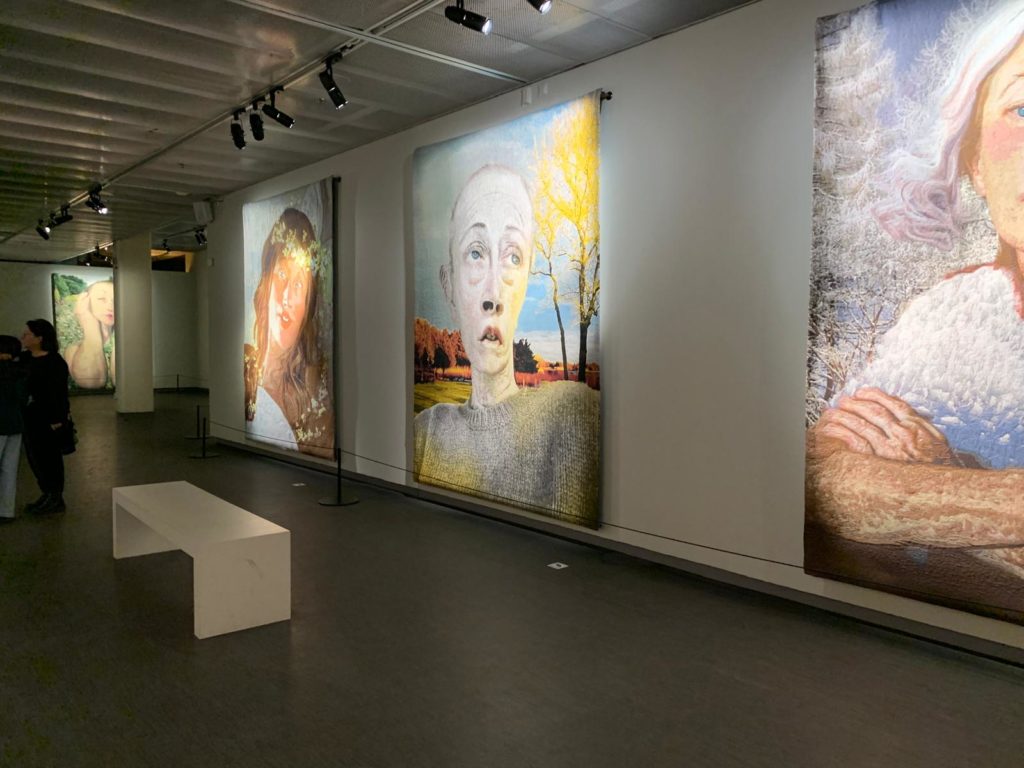

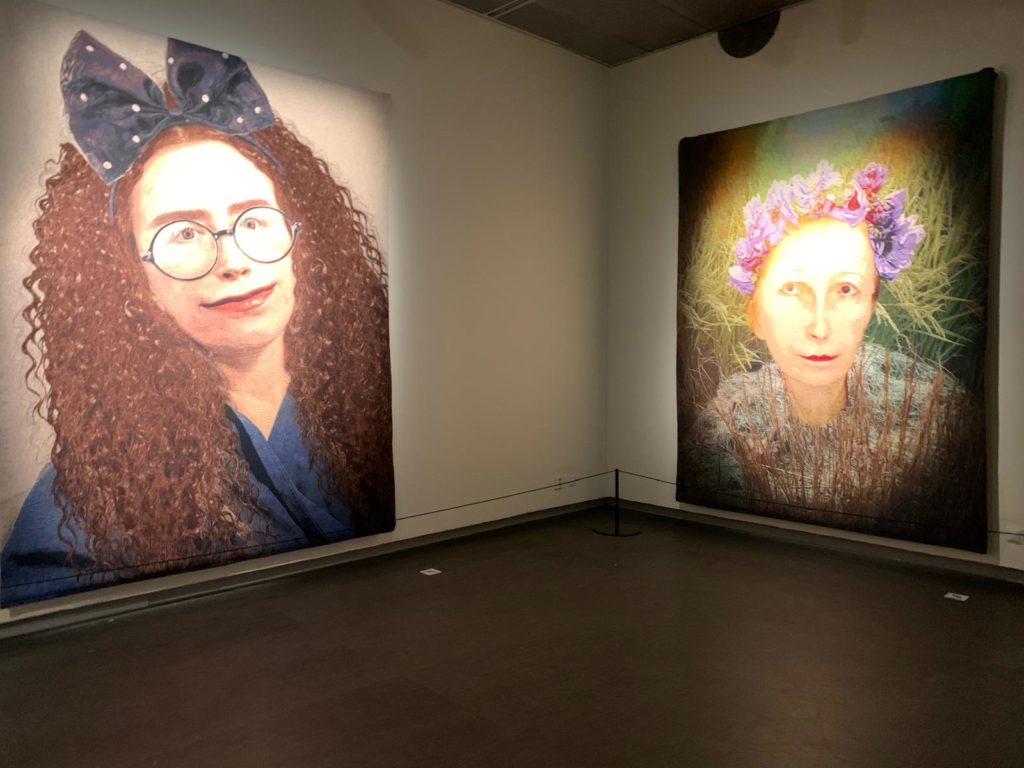
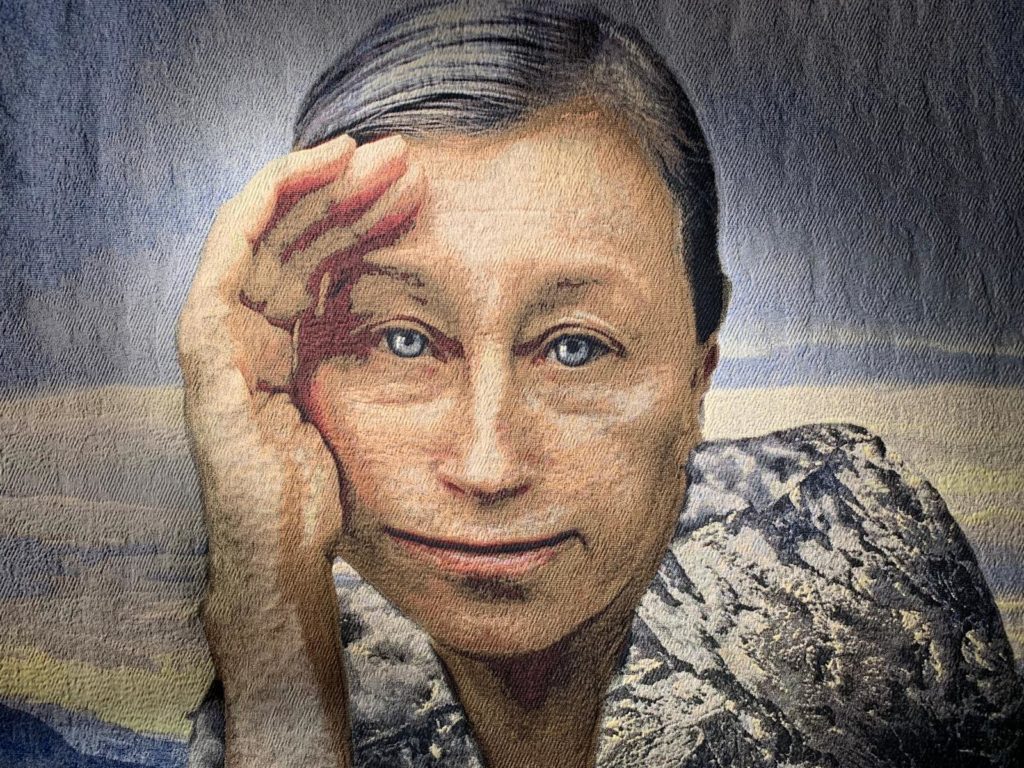
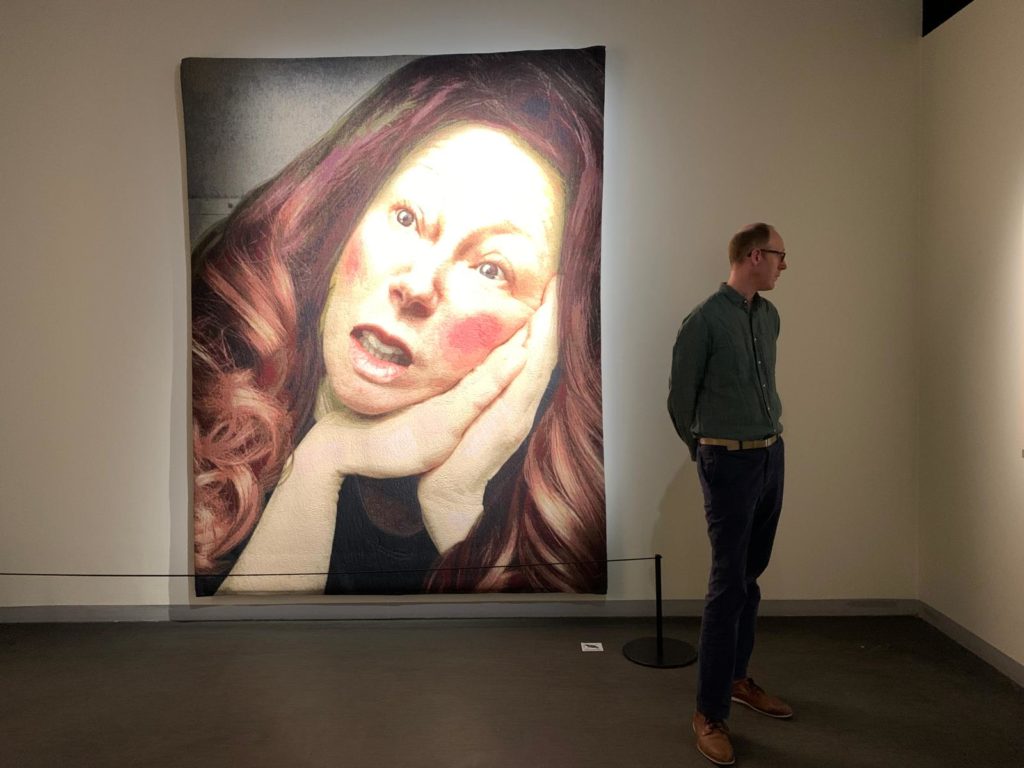
Cindy Sherman: Tapestries
Let’s start, then, with the first exhibition. Cindy Sherman: Tapestries. For those not familiar with Cindy Sherman, she is an American artist who, from the 1970s, has been transforming herself in photographs to explore issues of identify, gender, society and art history. This latest series, Tapestries, follows this familiar format but with a new twist. Sherman has taken manipulated selfies from her Instagram account, which mould and alter her features like so many do with social media filters. Finding the image quality was not sufficient for large-scale prints, Sherman instead commissioned tapestry versions. Belgian weavers have transformed pixels into threads, using historic techniques to replicate very modern images.
I found the concept more interesting than the images themselves. There is enough manipulation just changing them from photographs to tapestries that the original alteration and commentary on social media and body image/expectations is a little diluted. I didn’t find they packed the same punch as some other exhibitions of Sherman’s work I’ve seen. Perhaps after several decades and the rise of self-photography in the meantime it becomes more difficult to find a unique take and make it work. However, as the first exhibition you encounter, it wasn’t a bad introduction to Fotografiska: a well-designed exhibition with sufficient information for visitors, with a fun space to play with your own selfie image and reflect on the content.
Salterton Arts Review’s rating: 3/5
Cindy Sherman: Tapestries on until 9 June 2024. More info here.

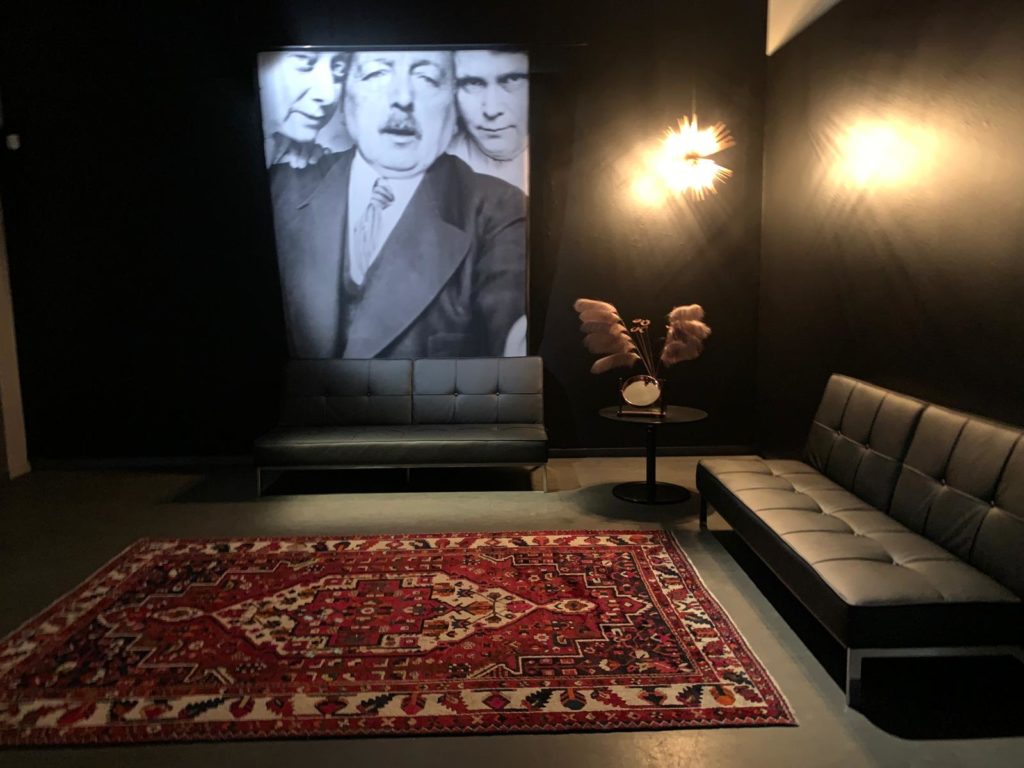
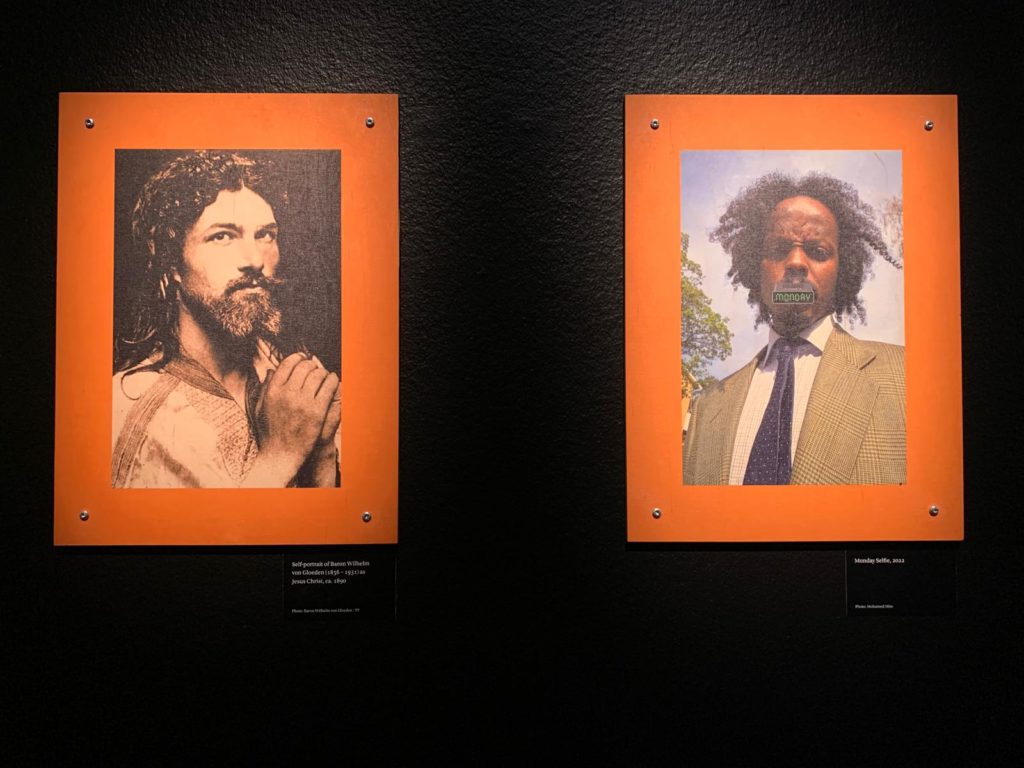
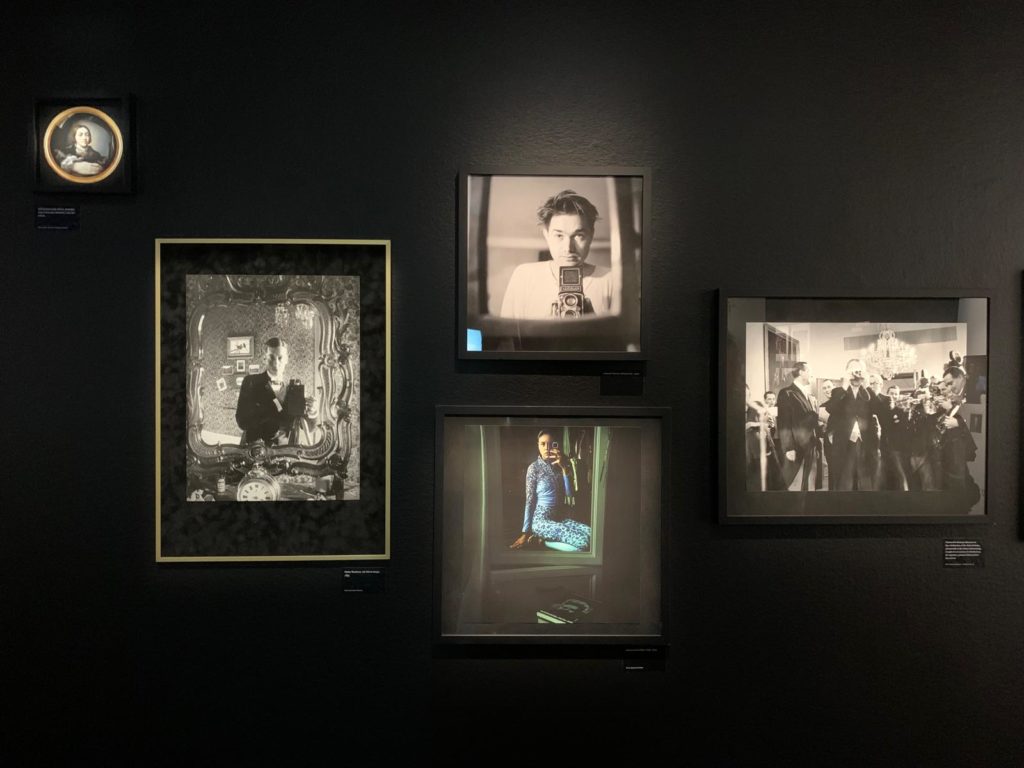
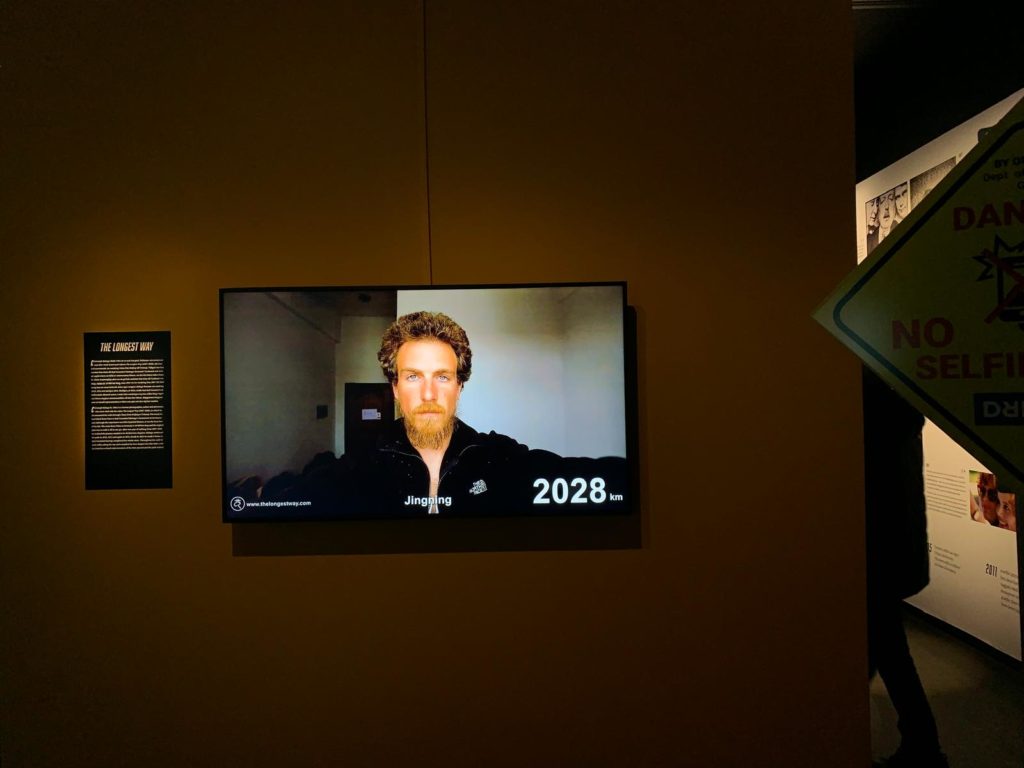
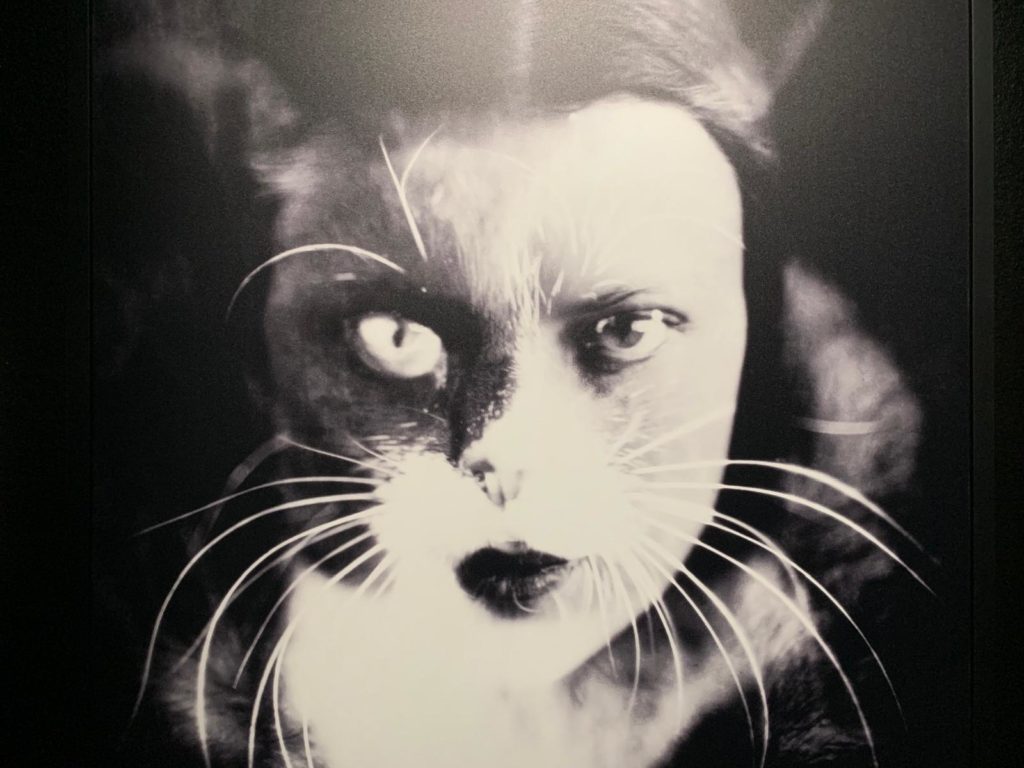
The Selfie Matter
Fotografiska categorise this next display as an installation rather than an exhibition, but I’m unclear what the difference is. The Selfie Matter is, as you would expect, an installation/exhibition about selfies. We think of selfies as such a contemporary phenomenon that it’s good to have a reminder that people have been taking photographs of themselves since photographs existed. The first ‘selfie’ can thus be dated to 1839, even if the word only entered the dictionary in 2013.
The Selfie Matter blends different historical periods and brings images together around different themes, like selfies vs. self portraits, or selfies taken based on location. It’s interesting to see that Anders Zorn, who I know as a Swedish painter, was also an avid selfie-taker. I liked a surrealist double exposure photograph of Wanda Wulz and a cat (above), and also the video of The Longest Way by Christoph Rehage, a documentary in the form of selfies of his voyage walking from China to Germany in stages between 2007 and 2023.
Finally there is a fun collaboration with Snapchat which allows visitors to take their own selfies in different historical formats. There is a wait time while others have a go, but it’s a nice inclusion of AR and filter technology to make an otherwise static installation interactive.
Salterton Arts Review’s rating: 3.5/5
The Selfie Matter on until 9 June 2024. More info here.
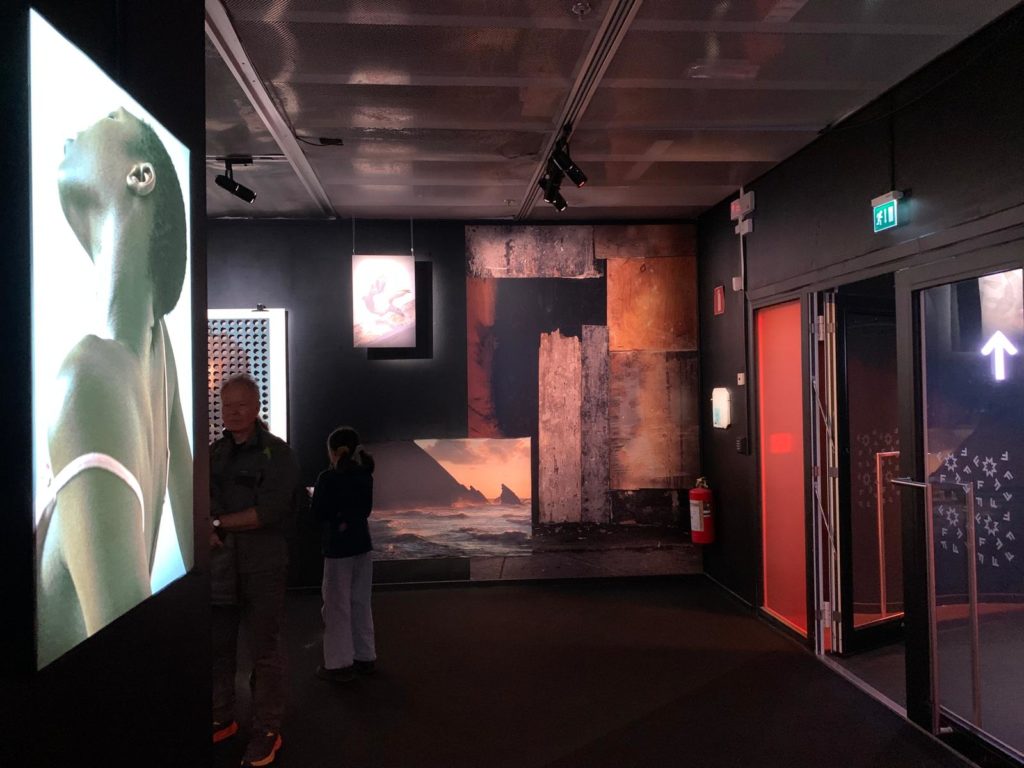
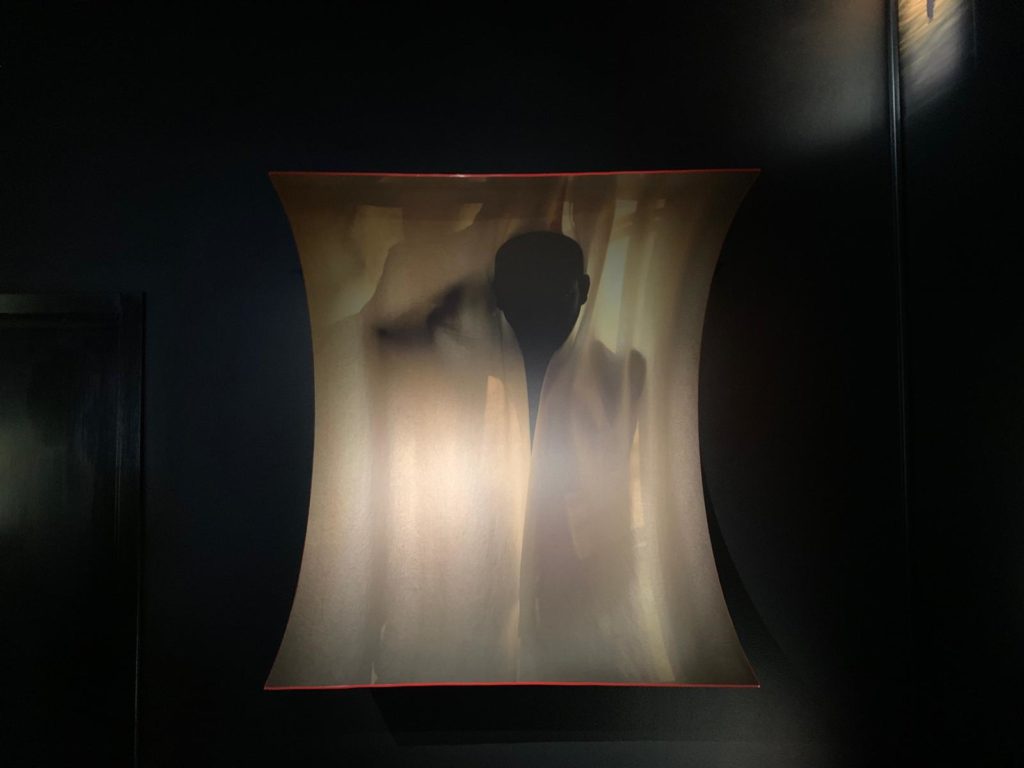
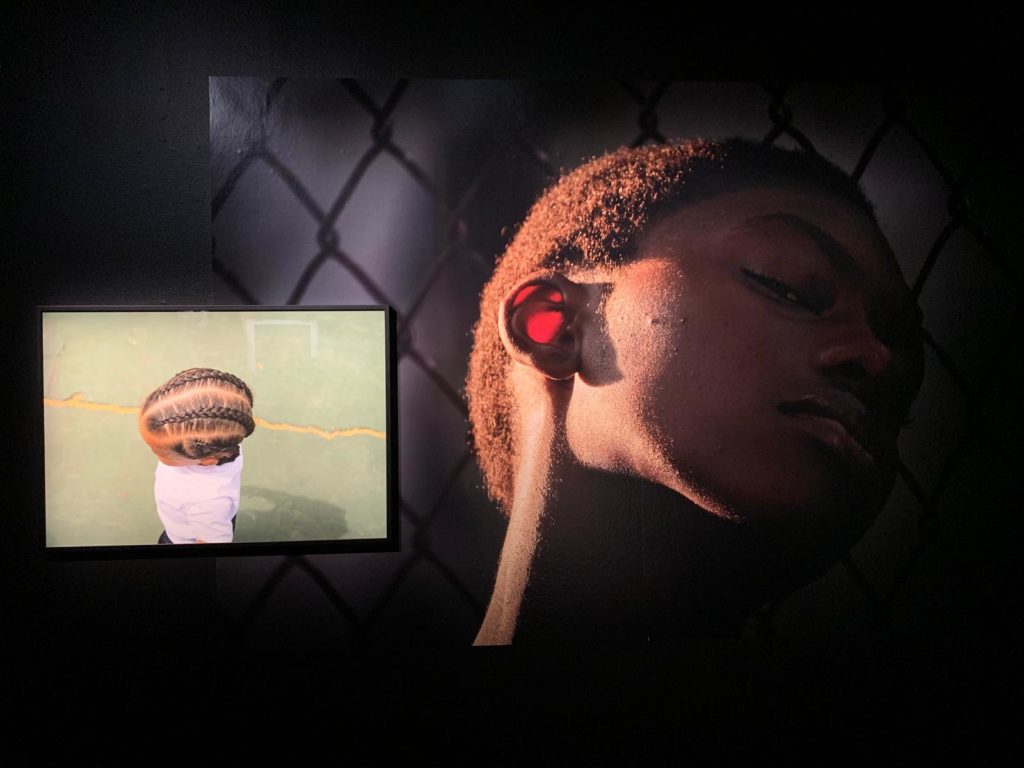
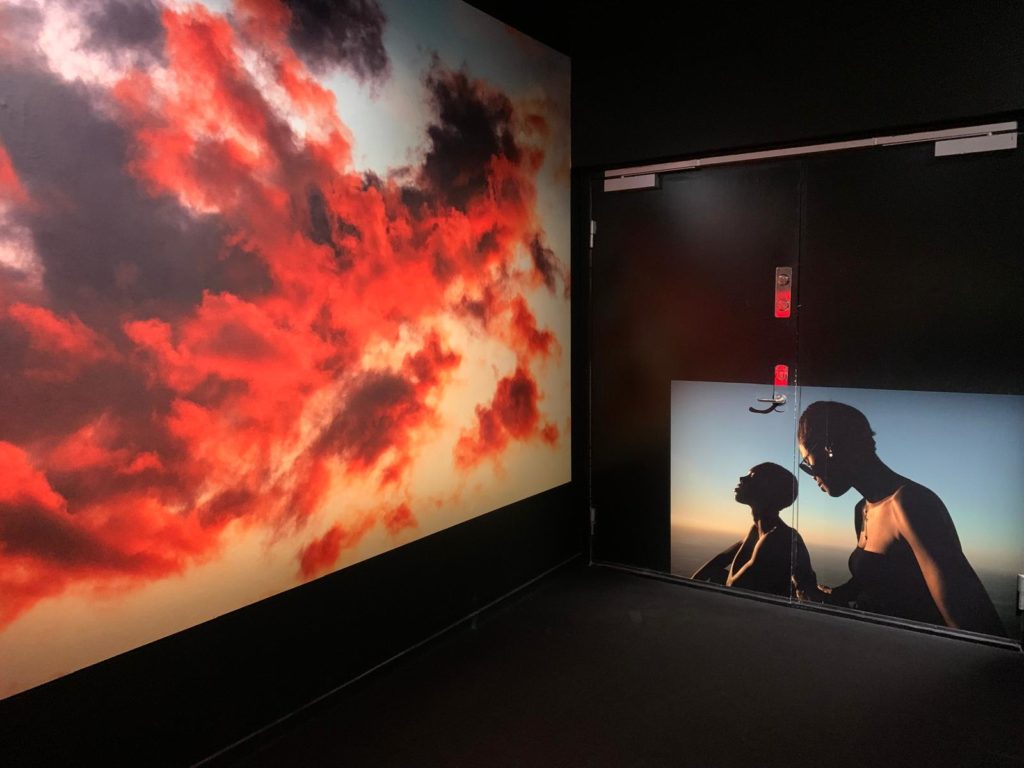
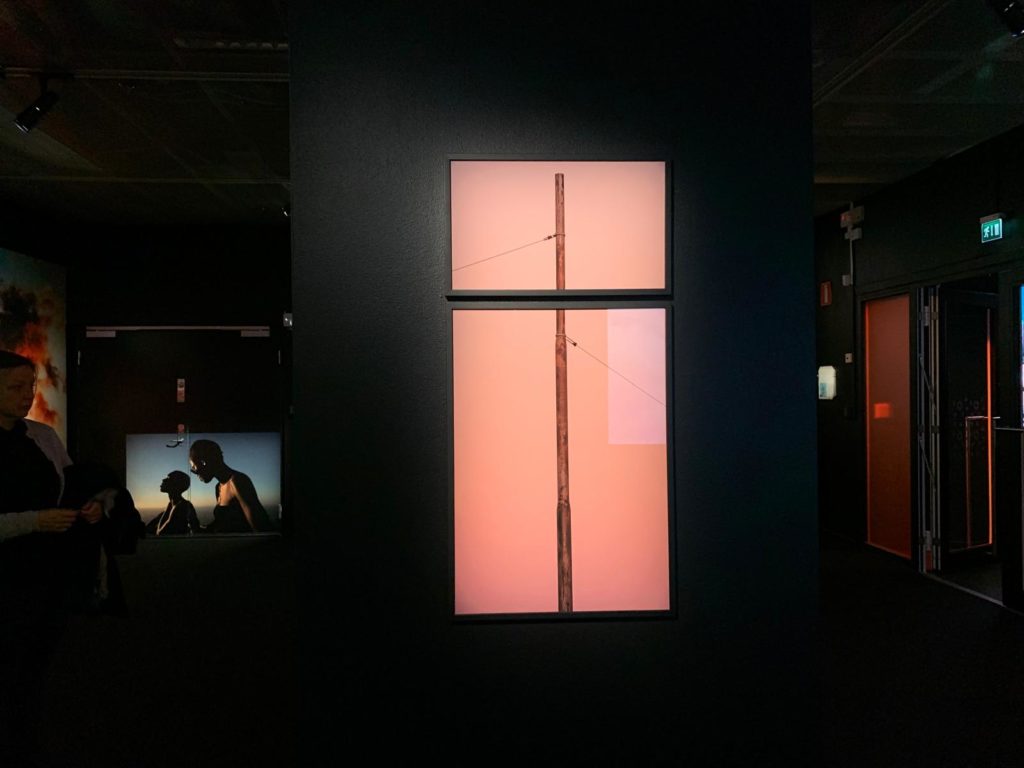
Senay Berhe: A Familiar Feeling of Now
Senay Berhe’s exhibition at Fotografiska is part of an emerging artists initiative. Berhe is based in Stockholm and self-taught, working across photography, music videos, documentaries, digital campaigns and films. The exhibition is small but atmospheric as the dim light brings out the warmth and depth of colour in the images. And the presentation is refreshing and unexpected: images are printed onto a variety of media, overlay each other, and hit you from unexpected angles.
Berhe’s take on ordinary objects and people reveals an artist’s eye likely honed by working in so many visual disciplines. He is one of those artists who makes you rethink the everyday and appreciate the beauty around you. It left me wanting more, and of all the exhibitions I saw at Fotografiska I thought this was the most memorable and compelling.
Salterton Arts Review’s rating: 3.5/5
Senay Berhe: A Familiar Feeling of Now was on until 5 May. More info here.
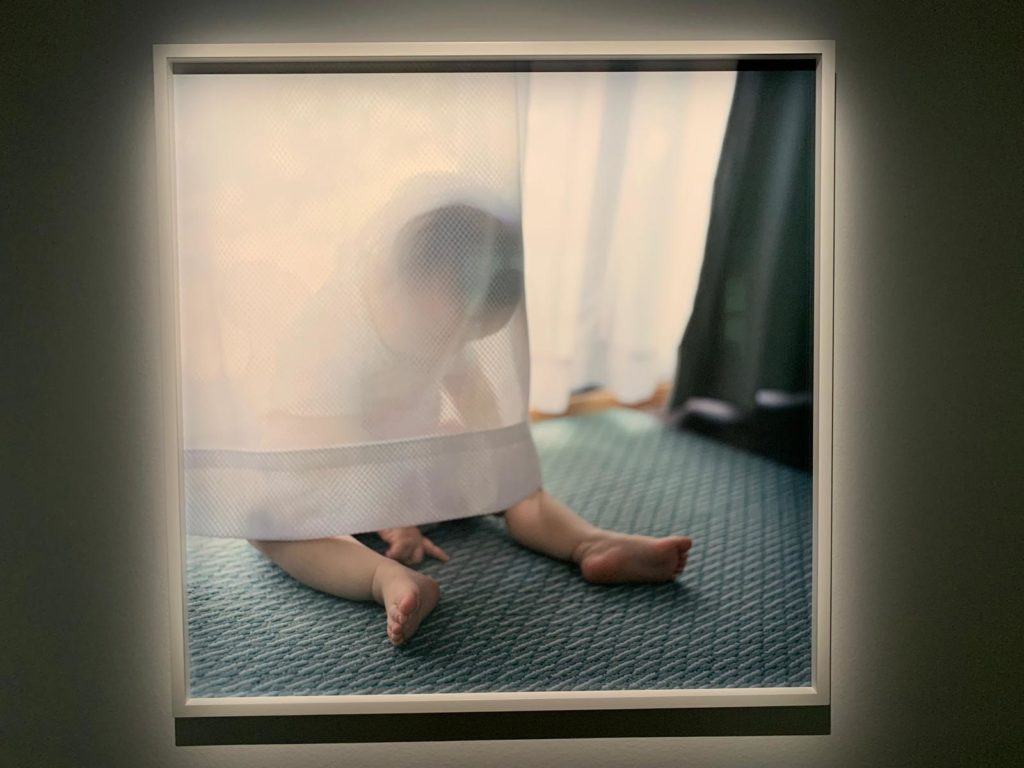
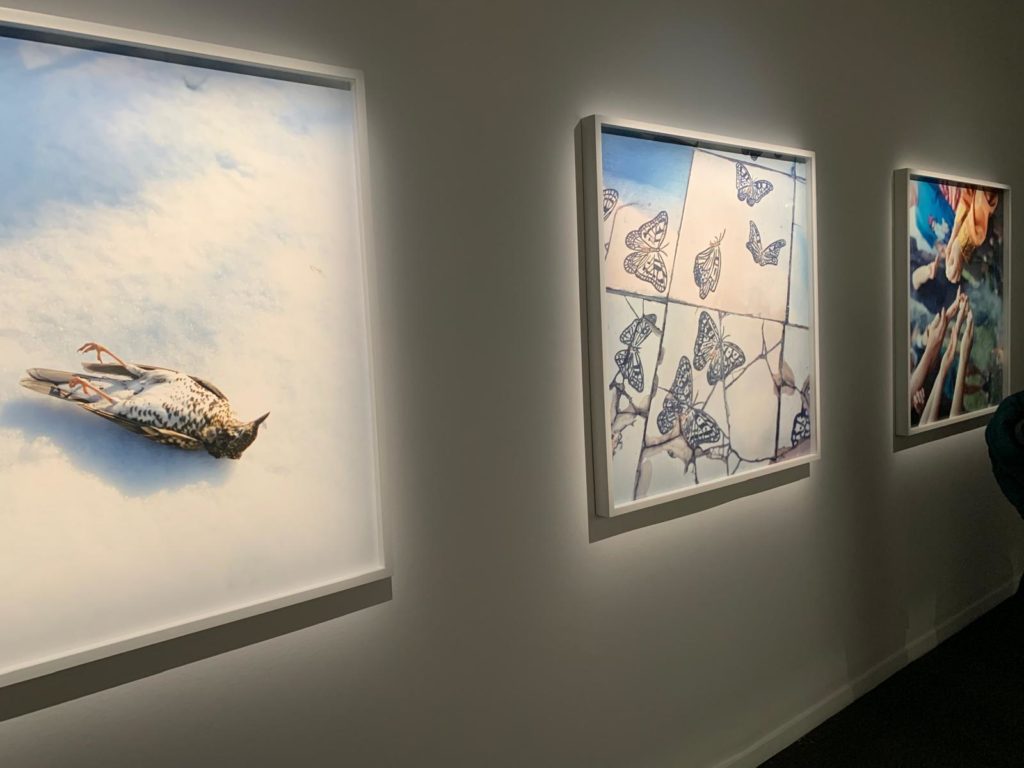
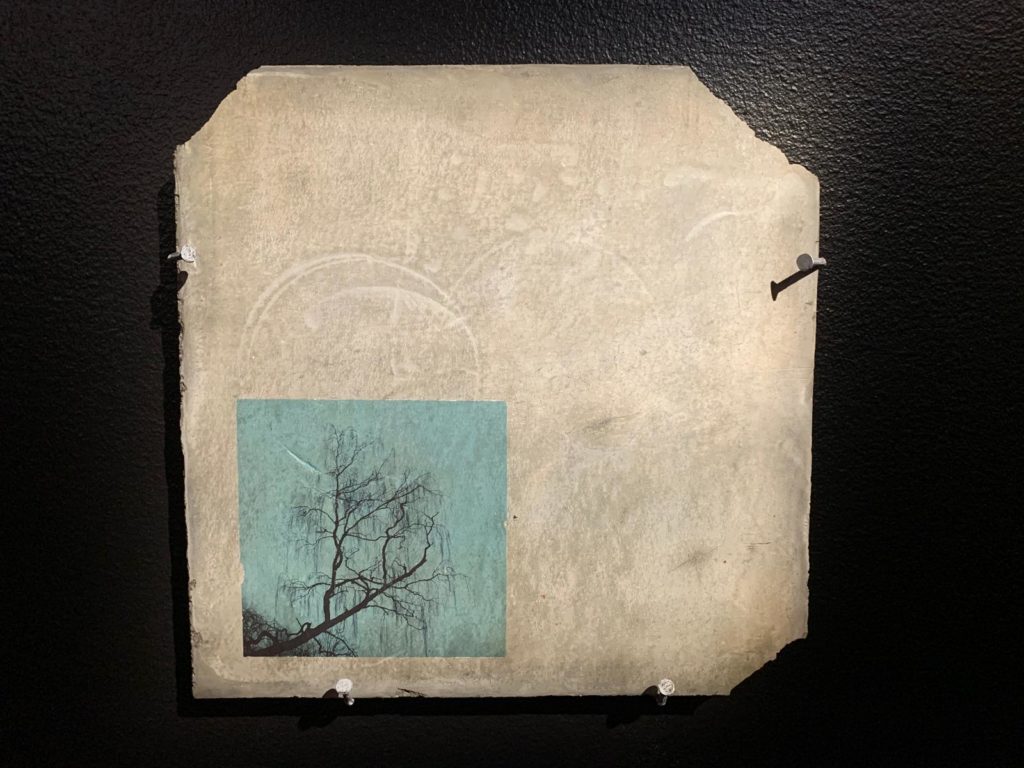
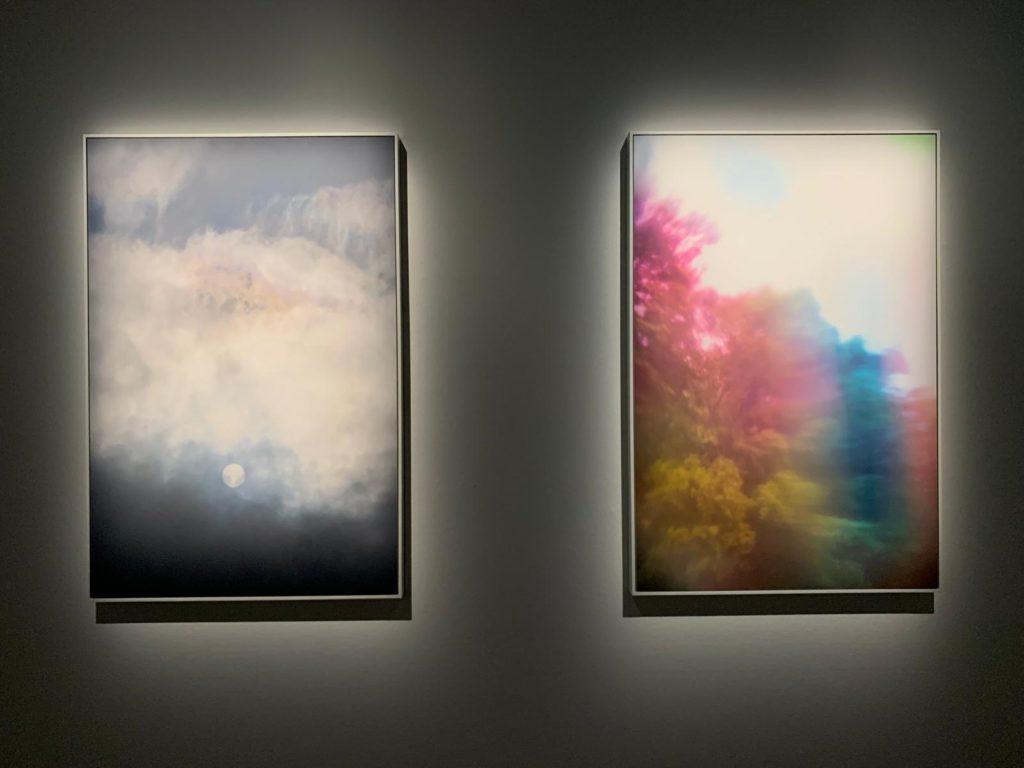
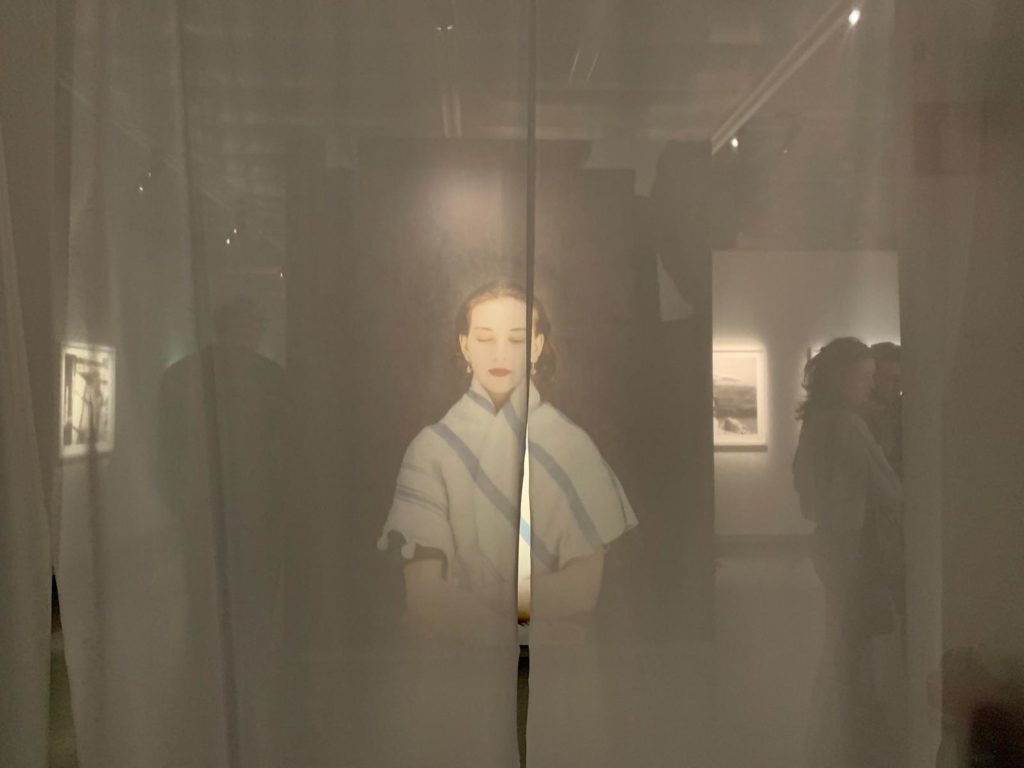
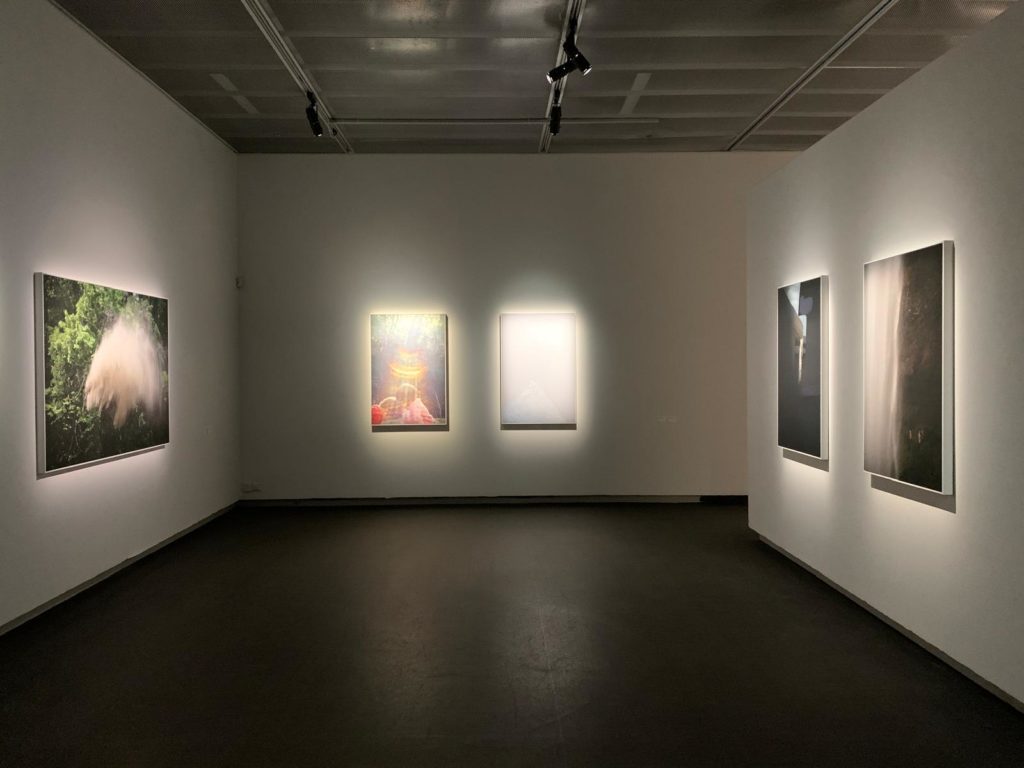
Rinko Kawauchi: a faraway shining star, twinkling in hand
If Senay Berhe’s work is dark and warm, Rinko Kawauchi’s is so light and dreamy it feels like it might float away any second. They share a focus on the everyday, but approach it with very different techniques. A well-established artist in her native Japan, this is Kawauchi’s first exhibition in Sweden. a faraway shining star, twinkling in hand brings together images made in response to two large-scale changes to her life: motherhood and COVID-19. It includes the series M/E (‘me’ or ‘Mother Earth’) from a 2019 trip to Iceland, alongside images made in Hokkaido when a return trip became impossible. The series An interlinking includes images from Kawauchi’s life over the last two decades.
The contrasts between the two show the connections between the grandest of natural phenomena, and the most local of everyday situations. A macro and micro, if you will. The soft pastel colours instill a sense of calm, as does the gauzy canopy beneath which smaller-scale works can be viewed. The juxtaposition of photographs of our fragile environment and Kawauchi’s young daughter growing and exploring gives us pause for thought, a concerned yet hopeful look towards the future.
Salterton Arts Review’s rating: 3/5
Rinko Kawauchi: a faraway shining star, twinkling in hand was on until 14 April 2024. More info here.
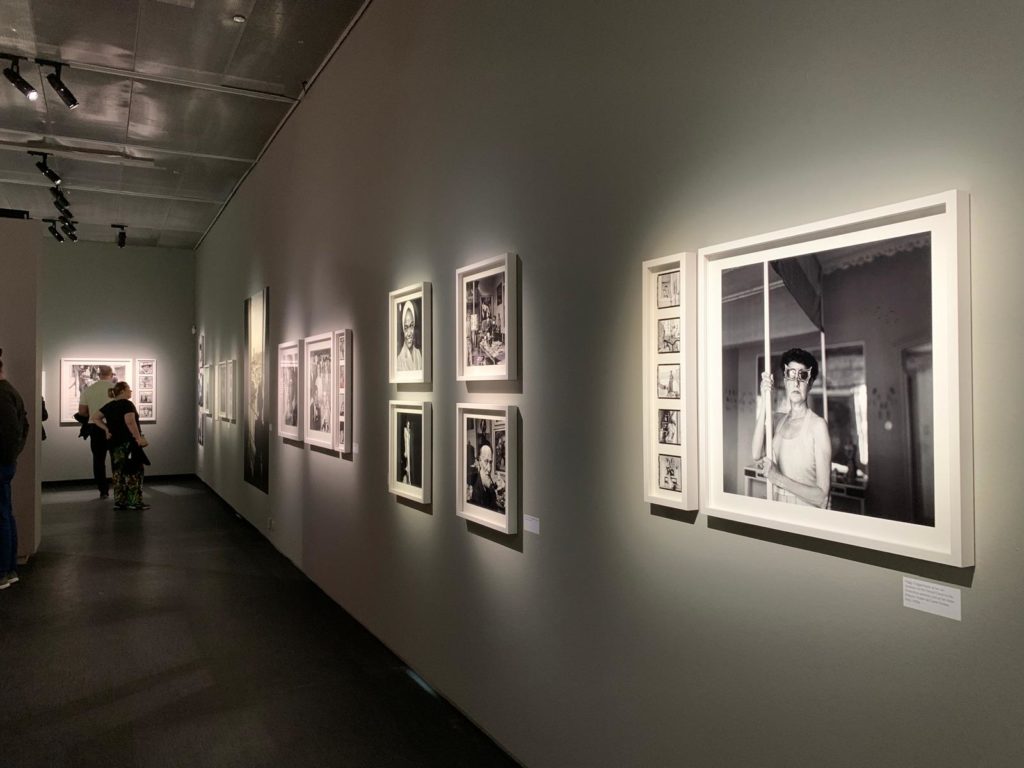
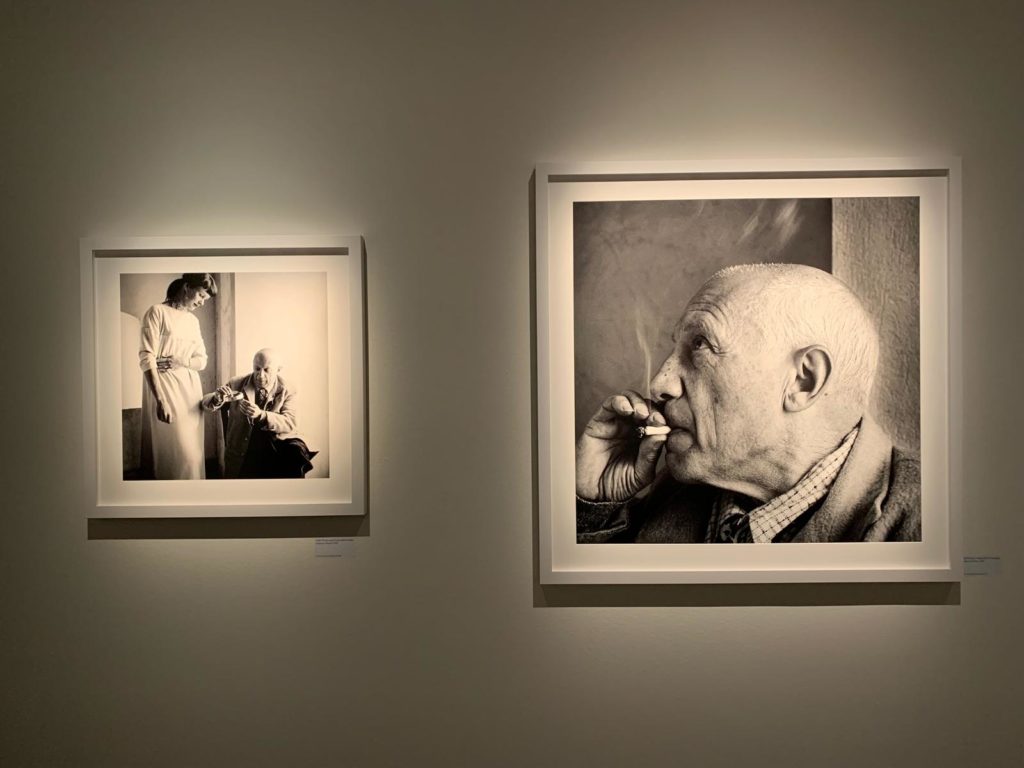
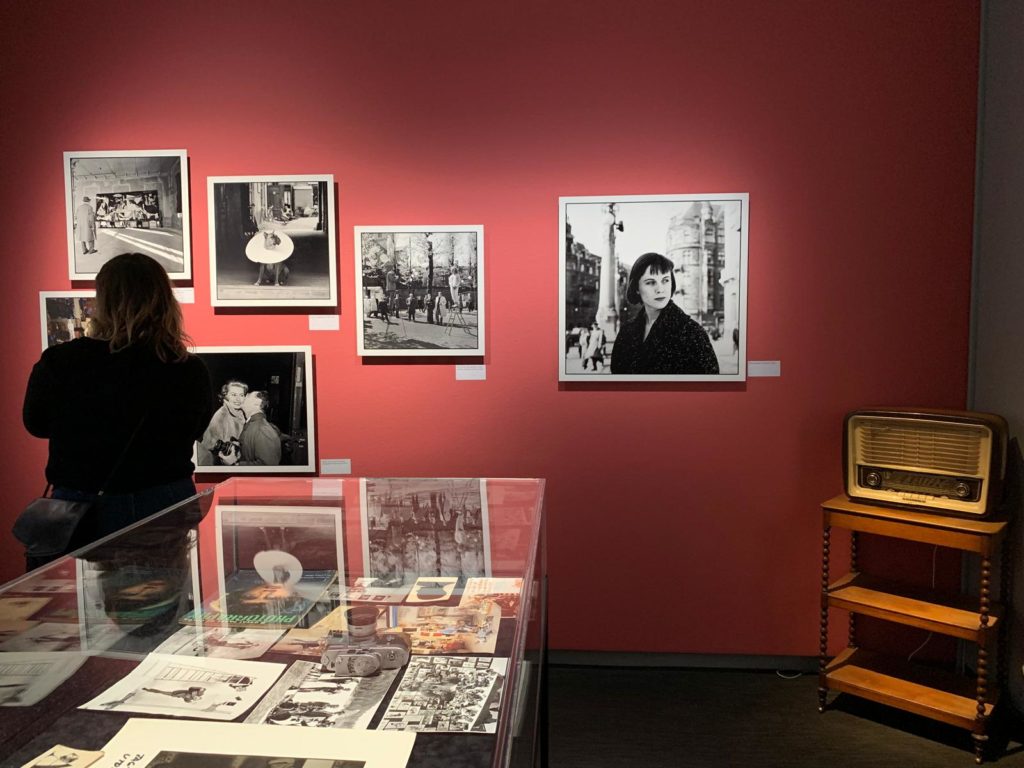
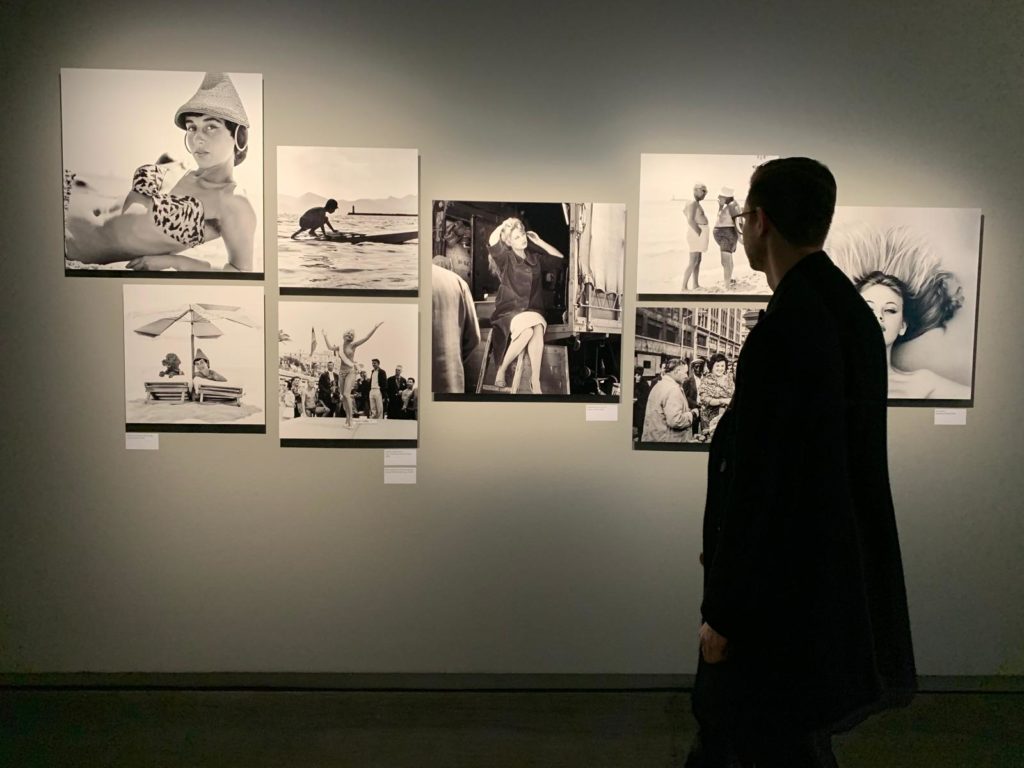
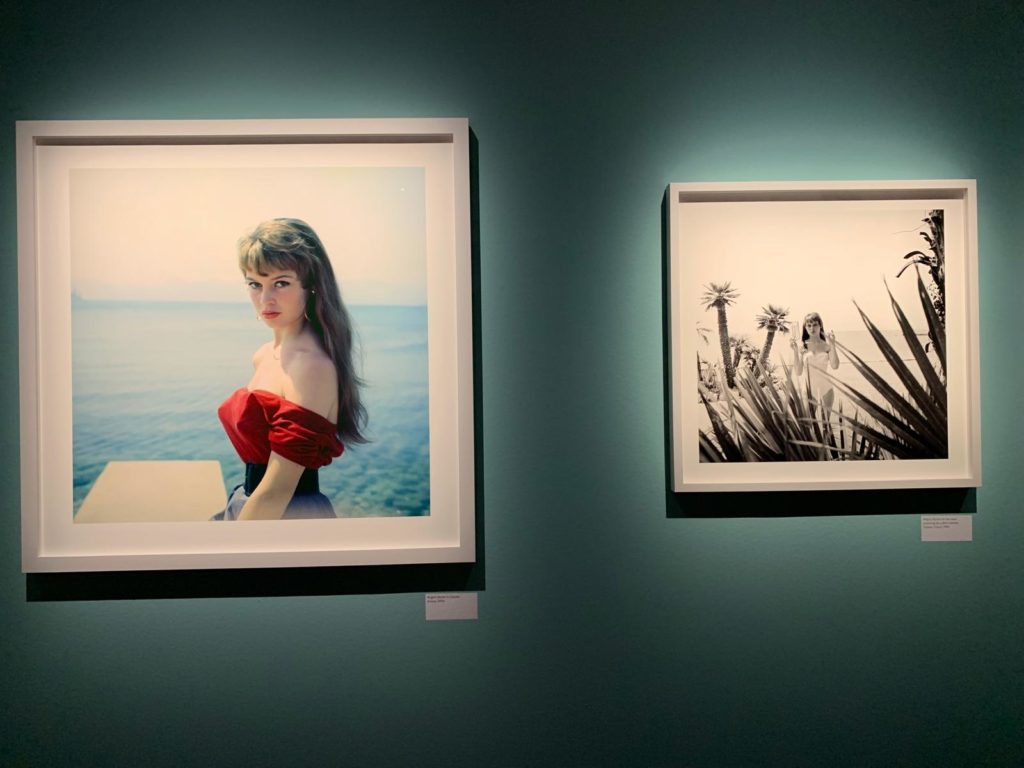
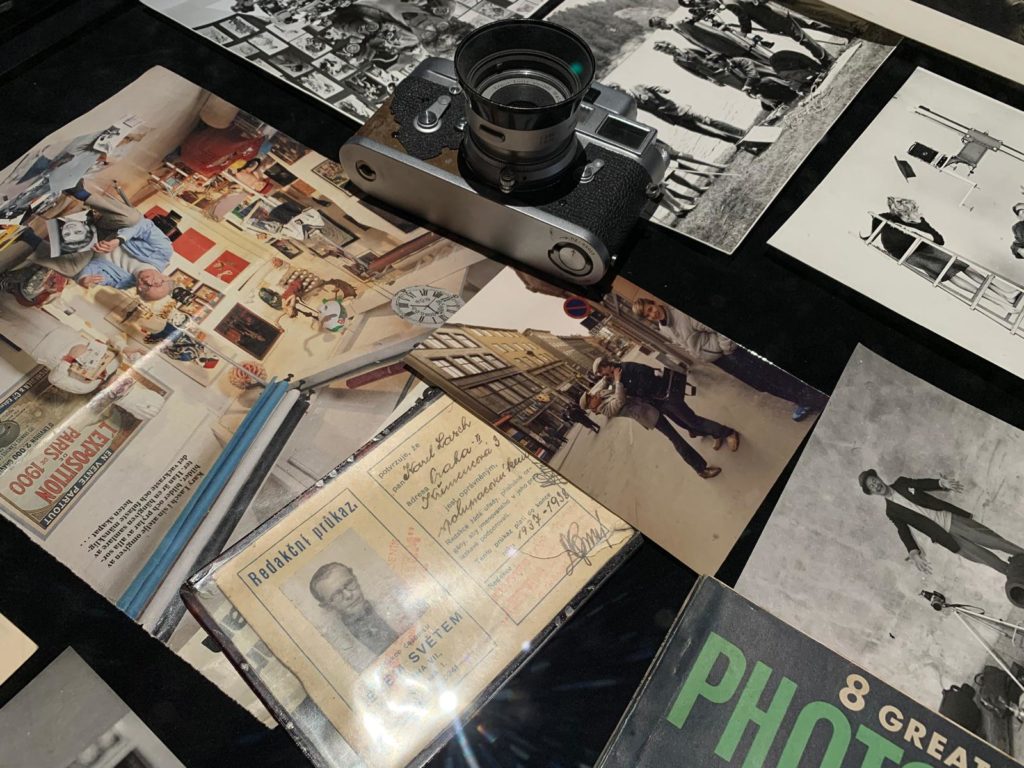
Kary H. Lasch: The Golden Years
I wasn’t previously familiar with Kary H. Lasch, but I certainly was with his subjects. The exhibition’s title refers us back to the Golden Age of Hollywood, and from the walls stars like Brigitte Bardot and Grace Kelly smile down at us, as do art superstars like Picasso and Dalí. Lasch, born in Prague, lived most of his life in Stockholm. This exhibition showcases selections from his personal archive of over 500,000 photographs, aquired, organised and digitised since 2019 by Michel Hjorth and Christer Löfgren.
The exhibition creates an atmosphere very effectively. Music accompanies the visitor, perfectly matching the fun, playful air of all those glamorous people on the Riviera and other fashionable spots. His rapport with his subjects is obvious from their relaxed and frequently informal poses. There’s a deep nostalgia to capturing an era so perfectly, and although this exhibition is slightly inconsequential, it’s pleasant and a contrast to some of the more contemporary artists on view when I visited Fotografiska.
Salterton Arts Review’s rating: 3/5
Kary H. Lasch: The Golden Years was on until 14 April 2024. More info here.
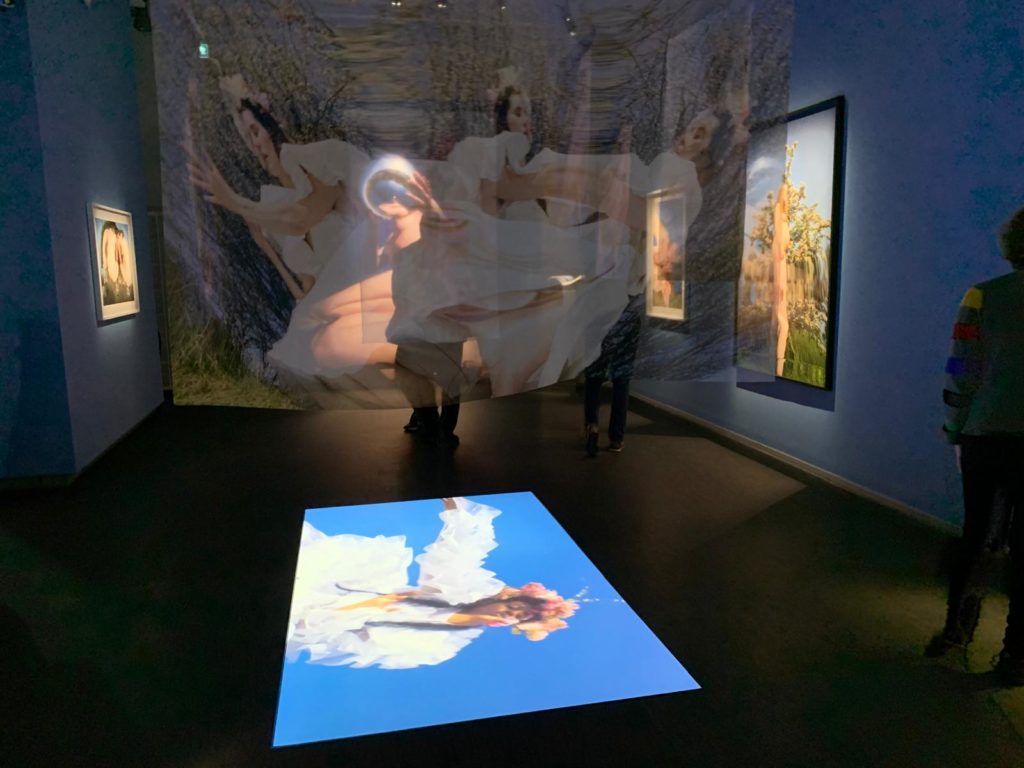
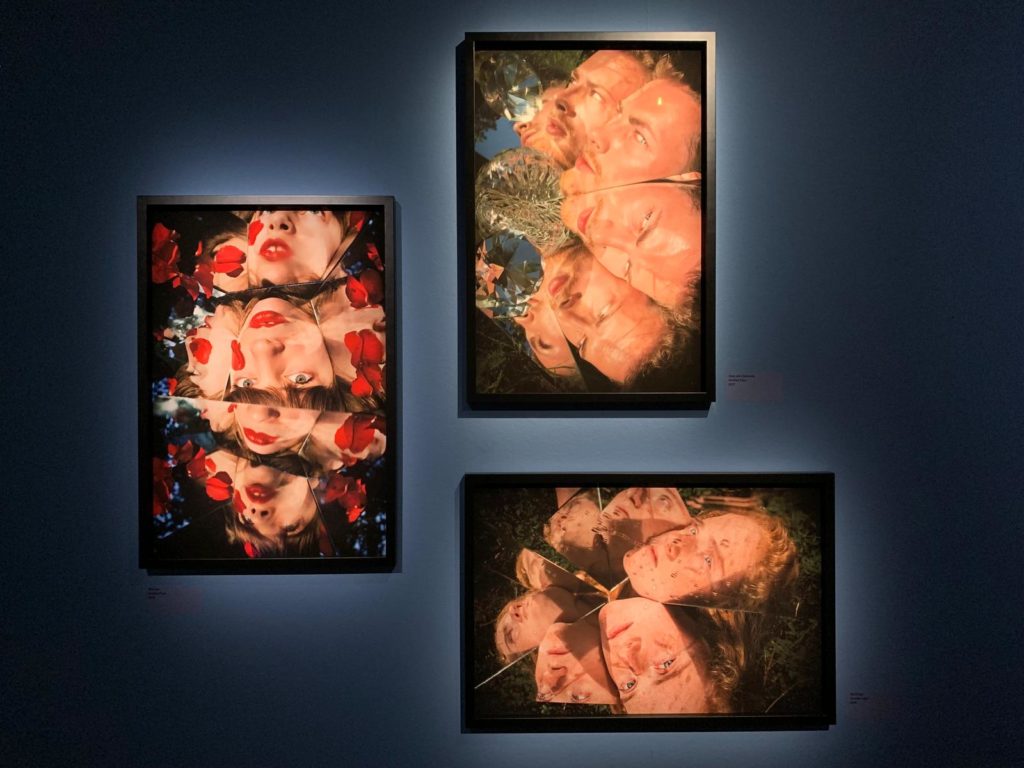
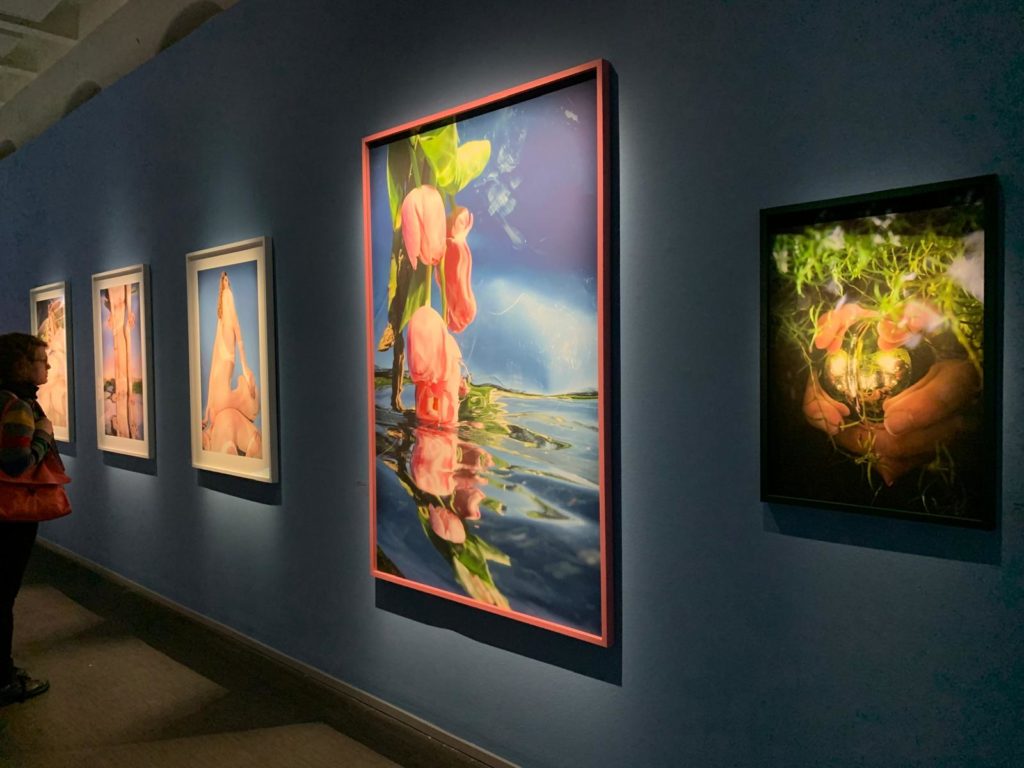

Henriette Sabroe Ebbesen: Kaleidoscope
This was rather a surreal note on which to end my visit to Fotografiska. Deliberately so. According to the website, mirrors, reflections, illusions, and surrealism are Sabroe Ebbesen’s ‘lodestars’. Trained as a doctor, she explores the human body but beyond it too, to the psyche and reality itself.
Aesthetically it didn’t quite work for me. As the final exhibition I saw, the bright, often kaleidoscopic images felt too much for me to unpack and make sense of. Some images felt deliberately provocative without a clear purpose. Maybe it was just time for me to go have a coffee and a sit down though, and on another day I might have thought differently.
I did enjoy the extension of some works beyond framed images, spilling onto the gallery walls and floor. But chalking up just one exhibition as ‘not for me’ from all the ones I saw is still not bad going. An enjoyable first foray into the Fotografiska brand!
Salterton Arts Review’s rating: 2.5/5
Henriette Sabroe Ebbesen: Kaleidoscope was on until 12 May. More info here.
Trending
If you see this after your page is loaded completely, leafletJS files are missing.

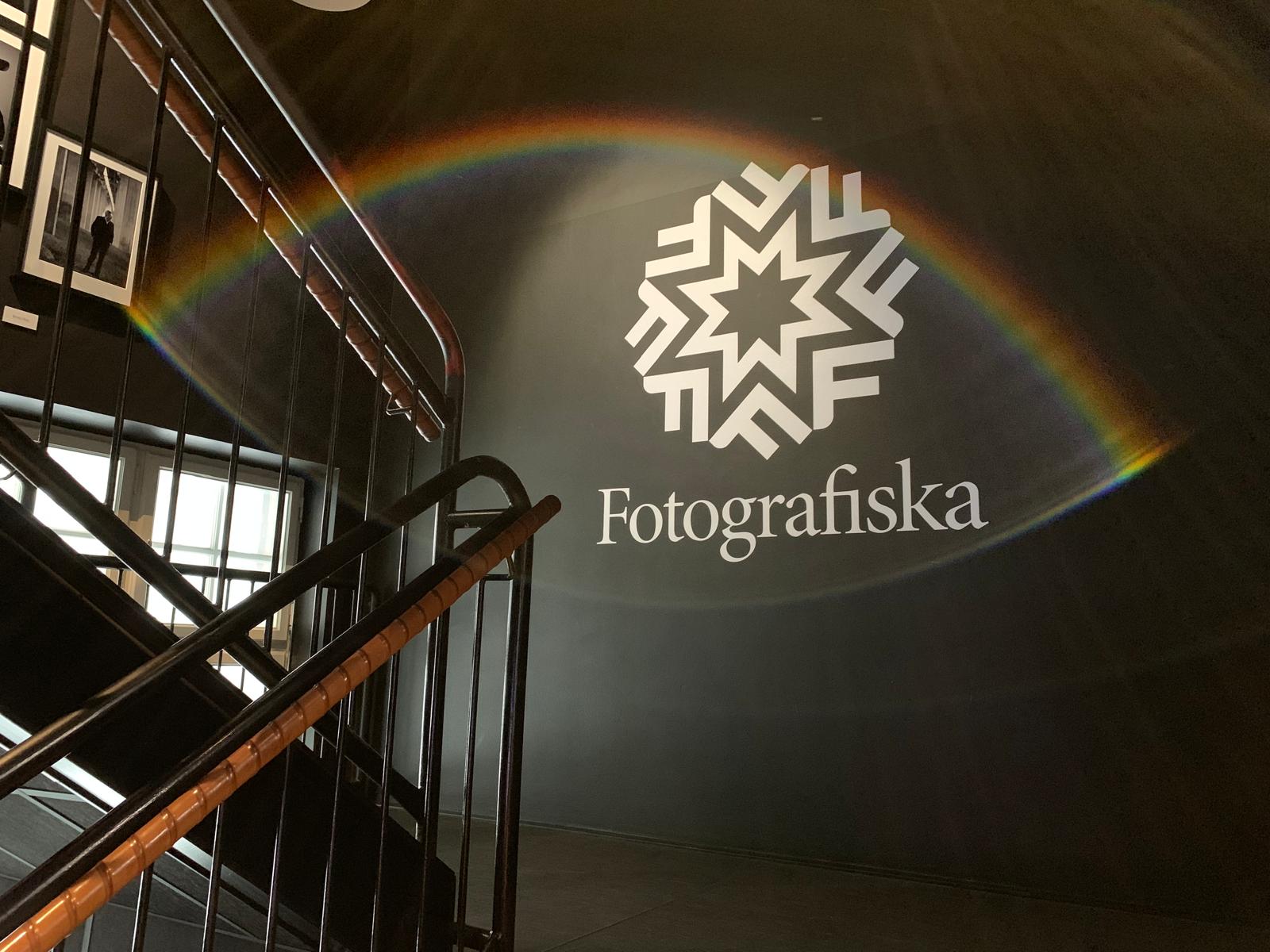
Gosh – you made the most of the visit! It looks like a fascinating comparison between exhibitions and some really interesting and memorable images.